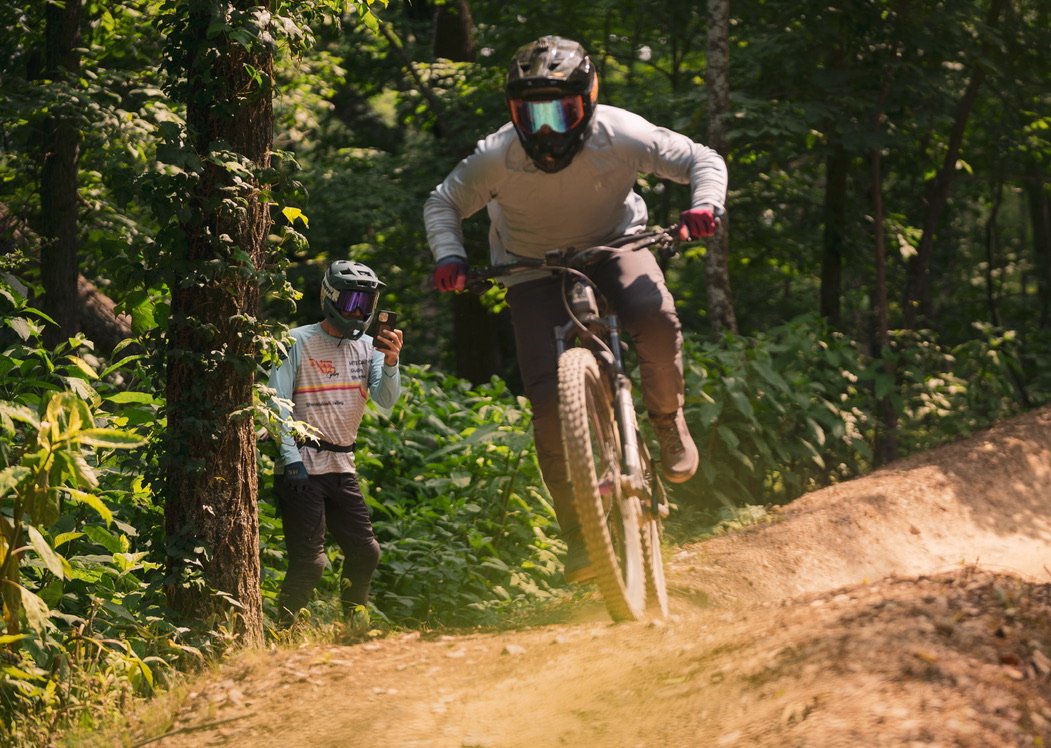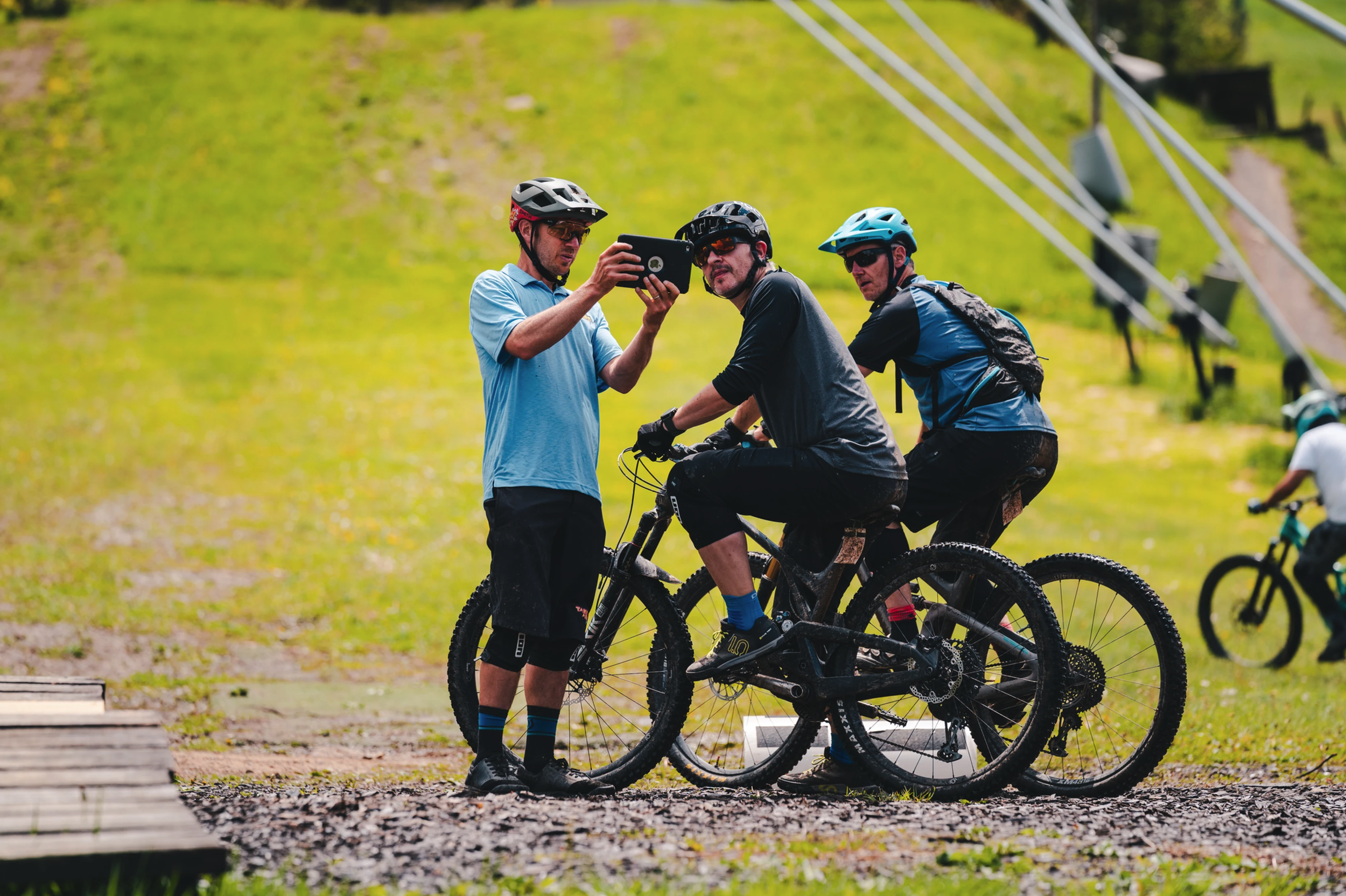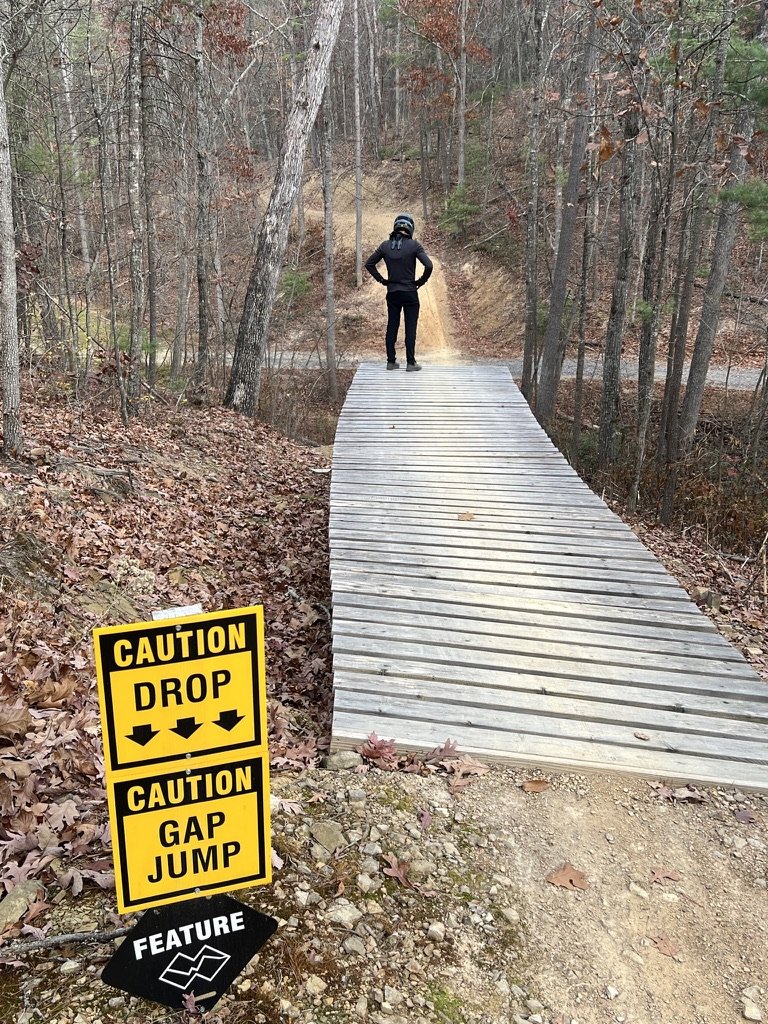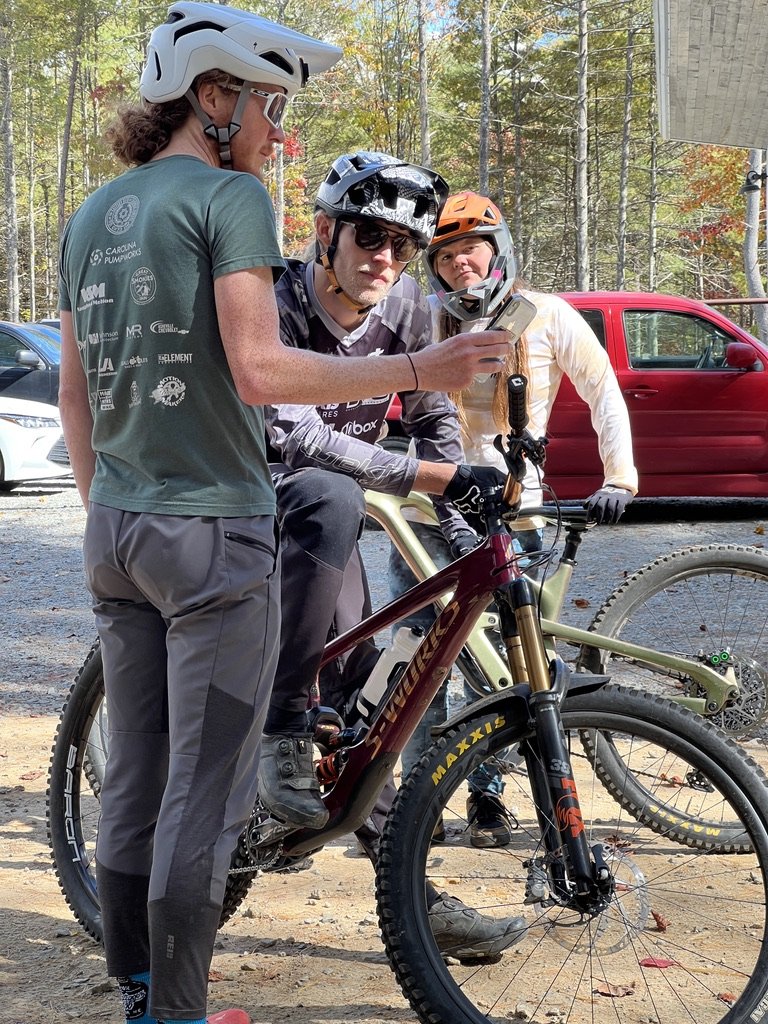
Harlan Price:
Tips to Filter the Online Noise.
By Harlan Price
Harlan Price is an accomplished Level 3 Professional Mountain Bike Instructor Association (PMBIA) Coach. Harlan raced endurance and enduro MTB professionally for 10 years before transitioning into coaching and skill instruction in 2011. In addition to personal coaching and instruction, he also certifies Level 1 and 2 Instructors for the PMBIA all around the world and enjoys developing the upcoming generation of coaches. He teaches in all environments - from DH bike parks to XC trails and works with beginners to professional level mountain bikers.
Don’t watch that YouTube video alone! Three tips for you to filter the online noise and start learning how to mountain bike better.
Let’s do a breakdown of the positives and negatives of YouTube mountain bike tutorials and how to get the most out of them.
I’ve been teaching mountain biking for over a decade and watching YouTube instruction videos for just as long. I watch a mind numbing amount of them in order to help my clients dig out of the rabbit holes they fall down. We won’t throw out the whole genre of YouTube tutorials but knowing what pitfalls to watchout for can help you navigate the overload of information.
Let’s start with the short but meaningful list of positives that an instruction video provides. For one, they build stoke and get people excited to try new things. These video creators are well intentioned and want to help others learn how to have more fun on their bikes. Another positive is that they help build a visual awareness of the technique you’re trying to achieve. There is slow motion, use of arrows and lines, and ample compare and contrast happening. Those are great for building an ideal image of the way to do something. The trick is translating that information into your actual movement!
The first negative is the lack of feedback you get from a YouTube video. In a lesson, the information should always travel two directions and it’s that exchange between an instructor and a student that tailors the lesson to the needs of the student. A good instructor can describe something in a few different ways and they can use your past experiences to help you understand the feeling you’re aiming for. They also shoot video and help you analyze the details that are holding you back.

Feedback
“The first negative is the lack of feedback you get from a YouTube video.”
Another main complaint I get from chronic video watchers is the feeling of being overwhelmed by information! Watch enough videos and you’ll hear multiple explanations for the same thing. You’ll also hear a lot of things that aren’t relevant and might even be contradictory to what they are visually demonstrating. The truth is there is more than one way to do a drop, but what the presenter often does is say this is “how” you drop no matter the different sizes, shapes or speeds that define that drop they are presenting. Remember that different drops may require different techniques and those subtleties might be difficult to see in a single YouTube video.

“…different drops may require different techniques and those subtleties might be difficult to see in a single YouTube video.”
The other issue to watch out for is if the verbal directions they give match up to what they are actually doing. Or, what critical piece are they leaving out? I’ve seen very famous PinkBike how-to videos where the person says to do one thing but does another in a braking tutorial. Another example of information left out is when and how much to “stand up to the jump” in that other famous jumping tutorial. I wonder how many people have gone dead-sailor when trying to apply these tips?! Always have a critical eye and be willing to filter whatever an instructor is saying!

Let’s summarize the main problems and solutions for getting the most out of your YouTube instruction watching…
Video doesn’t give feedback; Solution is to get some video of yourself and compare and contrast! Ask yourself what feeling you are trying to achieve and use that as your guide.
There’s too much information; Solution is to pick one piece of the puzzle and experiment. If you have ten pieces of information, focus on one at a time and then try it in a variety of ways. All those tips are helpful and can facilitate the riding but you don’t have to do them all at once! Filter!
Instruction that doesn’t match the demonstration; Solution is to take everything with a grain of salt and build your critical eye! What did they forget to describe or what do they misunderstand about how they actually perform the technique?
Now that I look at the solutions above I realize that they are basically a summary of what makes a good instructor. They listen and try to simplify the information down to only what is needed for you. That means not over or under explaining in order to keep the confusion at bay. Then they help you coach yourself by trying to convey the feeling you're trying to achieve through good visual and verbal feedback!
So be your own coach. Be critical of the videos and try to summarize things in ways that help you meet your goals. Remember, doing a corner isn’t a feeling. Being powerful, creating more traction, or accelerating out of the exit is a feeling. Aim for the sensations not just the “act”. When all that fails, come take a lesson!

